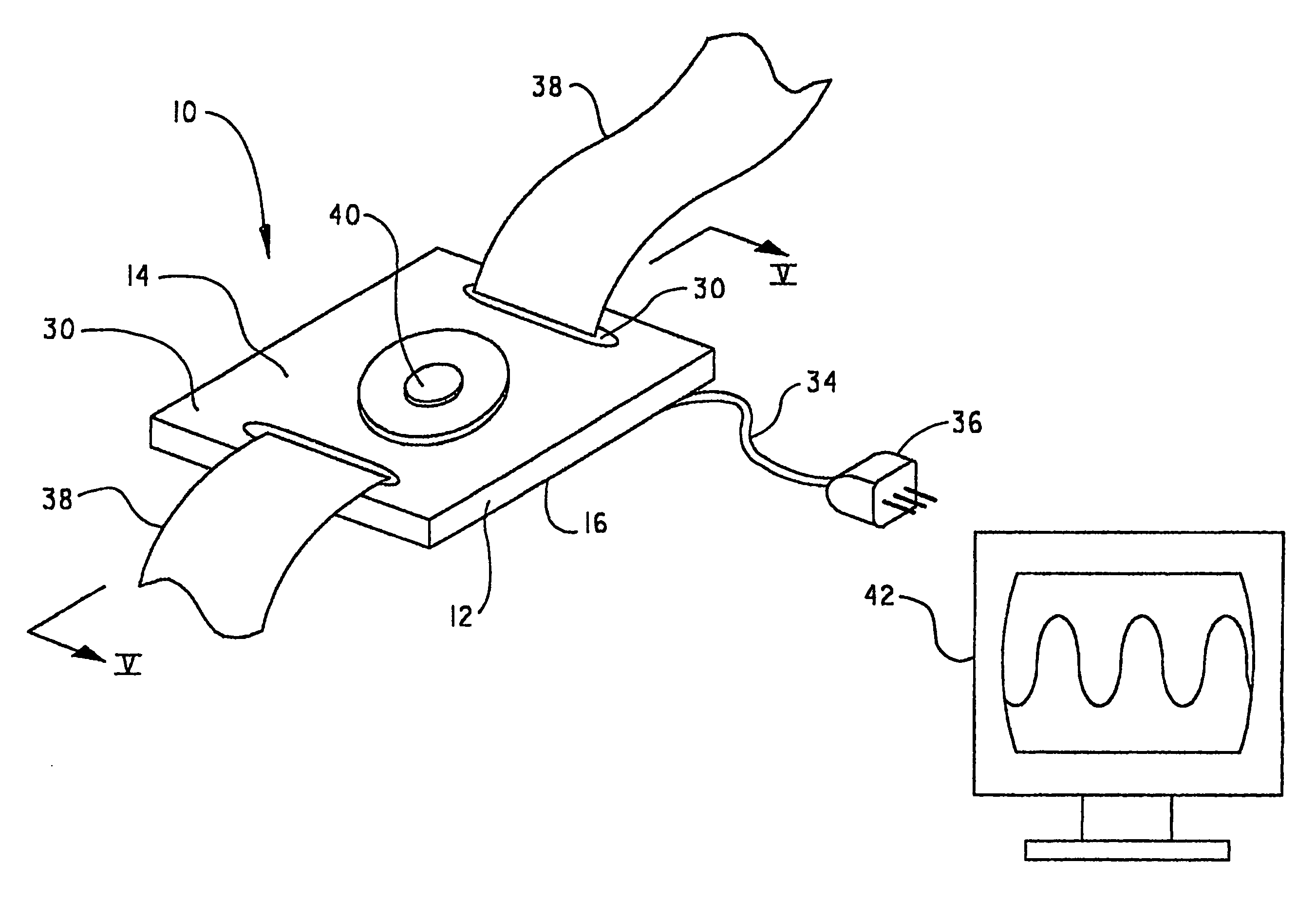Capacitive uterine contraction sensor
- Summary
- Abstract
- Description
- Claims
- Application Information
AI Technical Summary
Benefits of technology
Problems solved by technology
Method used
Image
Examples
Embodiment Construction
[0026] The present invention will be described with reference to the accompanying figures, where like reference numbers correspond to like elements. It is to be understood that the attached figures and the following specification are for the purpose of describing the invention and are not to be construed as limiting the invention.
[0027]FIGS. 1-3 are views of a first embodiment capacitive sensing element 10, with FIG. 2 illustrating an exploded view of the component parts thereof. Sensing element 10 includes a printed circuit board 12, having a copper top 14, a copper base 16, and an insulating, e.g., fiberglass, substrate 18. An electrically isolated stationary electrode 20 is defined in copper top 14 by removing, e.g., etching, a suitable portion of copper top 14 to form therein a crevice 26 having as its base an exposed portion of substrate 18. An exemplary thickness of printed circuit board 12 is 1.6 mm, so as to allow for an appropriate thickness of copper top 14, copper base 1...
PUM
 Login to View More
Login to View More Abstract
Description
Claims
Application Information
 Login to View More
Login to View More - R&D
- Intellectual Property
- Life Sciences
- Materials
- Tech Scout
- Unparalleled Data Quality
- Higher Quality Content
- 60% Fewer Hallucinations
Browse by: Latest US Patents, China's latest patents, Technical Efficacy Thesaurus, Application Domain, Technology Topic, Popular Technical Reports.
© 2025 PatSnap. All rights reserved.Legal|Privacy policy|Modern Slavery Act Transparency Statement|Sitemap|About US| Contact US: help@patsnap.com



